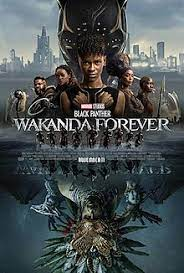Shooting a film, especially a feature picture, is a huge undertaking. We often hear about massive box office film costs in millions of dollars. We immediately think to ourselves, “Woah, how much does it cost to make a movie?” and “Is it that expensive?” But is it that expensive to make these blockbuster movies that we have all come to enjoy?
What about the average filmmaker? How can he or she make films that are both economical and within a budget? We’re taking a closer look at how much it costs to make a movie, why blockbuster films have such large budgets, and where the film money is spent.
Introduction to Film Budgeting
Average Cost of Making a Movie
The average cost of making a feature film is between $100 million and $150 million. Keep in mind that this is an average, meaning that there are feature films that cost less than $80 million and those that cost more than $200 million to produce.
The cost of making a movie varies depending on the number of actors involved, the amount of animation or special effects used, and the area in which it is shot. Many comedy films and some animated features, such as recent DreamWorks films, are made for $70 million to $90 million.
Deciding the Budget for the Production
What is it about making a movie that costs so much? The answer to that question varies considerably depending on the production. Some films are made for relatively little money, while others cost a lot of money.

A production’s budget is mainly determined by the projected production features and the talent involved. High-end productions, such as Avatar, cost more than $425 million to make.
Typically, a film’s budget is based on:
- The crew and cast.
- The rights to the script and the writers who create it.
- Producers and directors.
- Costs of production that are subject to change.
- Expenses of post-production editing.
Feature films often have large expenditures for actors. These days, many films have large budgets for visual effects as well. Location costs, transportation, and set construction are all factors to consider.
Budget of an Independent Movie
“How much does it cost to make an independent film?” you might wonder. That’s a terrific question, and the solution is just as difficult to articulate. The truth is that the expense of making an independent film is often far lower than the cost of making a feature film. This is understandable given that few people have millions of dollars lying around.
If you’re an independent filmmaker trying to nail down a budget for filming a movie, consider the recent budgets for some Sundance Film Festival entrants, which ranged from $10,000 to more than $100,000.
Since COVID-19 forced a production halt, independent filmmakers have had it extremely difficult. Director/Producer Miranda Bailey told Filmmaker Magazine that investors “may not be interested in hazardous enterprises” like Indie films. However, they demand a lower investment than feature films.
Your budget is ultimately determined by the film’s independent demands and the investors involved. However, you can expect the following professions to be included in your production costs:
- Film Director: $250/hour
- Script Writer: $150/hour
- Cameraman: $400/hour
- Editor: $175/hour
- Actor: over $500/hour
- Equipment: $100/hour
- Studio Shoots: up to $400/hour
- Narrator: $400/hour
- Audio Files: $1000/hour
- Video Rendering: $75/hour
- B-roll: Between 10% and 50% of your cost.
- Other Fees: This can cost you about $1000.
Budget of a Short Film
Even short films, which many aspiring directors utilize to develop a portfolio or generate buzz for a lengthier project, are not inexpensive. A short film’s typical cost per minute is between $700 and $1,500, possibly higher. Regardless of a film’s length, though, the reality is that filmmaking is an expensive industry in general.
Budgets of Big Movies
The mega-budget movies that you see these days are pretty common. Avatar, directed by James Cameron, is a classic example of a mega-budget film with a $236 million budget. As a result, their significant investment paid off handsomely, with the film grossing more than $2 billion worldwide. However, many additional films were not made on a mega-budget. They were, in reality, well under the usual movie budget. For example, The Return of the King grossed almost a billion dollars worldwide despite costing just over $100 million. Shrek 2, for example, cost even less ($70 million) yet grossed nearly $900 million worldwide.

Image Source: The Ridgefield Playhouse
Pirates of the Caribbean: On Stranger Tides is another example of a big-budget film. With a colossal budget of $378.5 million and a worldwide gross of over a billion dollars, the feature film holds the record for being the most costly film ever made.
However, not every big-budget film is a success. There are numerous examples of expensive films that failed to justify their cost. One of them is The Adventures of Pluto Nash. This picture had an approximately $100 million budget but only brought in $7 million in revenue. How Do You Know is another example of such a film. This picture cost more than $120 million to make, while it made only $50 million.
Budget of a film at three different levels
Breakdown of Expenses While Making a Feature Movie
While making a movie, you must break down the cost into the following categories:
The Script
The script serves as the film’s framework. If the template fails, the building will collapse sooner or later, just like any other physical structure. The script is crucial in determining whether a film is a success or a failure. As a result, it consumes about 5% of the budget.
Salaries and Licensing
This comprises the director’s, producer’s, and prominent stars’ pay, as well as the entire crew’s.
Costs of Production
Production costs can easily consume 25% of your whole budget. This substantial sum is used to fund the entire film’s production and the continuous salaries of the crew.
Special Effects and Music Composition
Special effects can consume a significant portion of the budget, depending on the film genre. Furthermore, music must be produced following the setting and performed well.
Marketing
The most crucial aspect of constructing a movie and the costly magic potion that it necessitates is its marketing. You do not want the massive investments of more than a hundred million dollars to go unnoticed. As a result, either nearly 35% of the budget is allocated to marketing, or additional money is earmarked to sell your new film.
Role of Movie Genres in Budgeting
Using data from IMDb and Statista, we can see that some genres cost more on average than others. For example, on average, adventure films are the most expensive cinema genre, with a budget of roughly $76 million. Sci-fi, animation, and fantasy films are among the most costly genres, with an average budget of over $60 million. Music-based, horror, and romance genres, on the other hand, have a relatively low median budget of less than $10 million.
Tips for Newbie Filmmakers to Finance their Movies.
Test Waters with Low Stakes
Allow for a margin of error. Allow yourself to take a big breath and go for it without putting your life on the line.
Filmmaking with a crew is more collaborative and allows you to take on larger productions and stories. However, it comes at a significant time and energy expense. You must be an exceptional producer to work on a crew-based film. You’re the one who comes up with the idea for the project.
Be the Scriptwriter and Director
To complete a feature film to your satisfaction, you will need a tremendous amount of expertise and energy. Either that or you will need some proficient colleagues to drag you along for the ride if you don’t have much expertise.
Some eccentric people begin their filmmaking careers with a crew. Perhaps they are part of a group of associates who wish to make movies together. Or maybe they like significant undertakings with extraordinary aims. They are usually working together on something innovative.
Start Building a Network in the Film Circles
Filmmaking is a collaborative and expensive art form. You translate your script for the screen. However, if you do not have a filmmaking network or a body of work, I suggest you start building one.
Tactics for Reducing Costs of Movies
Cut Down the Night Scenes
Shooting at night necessitates the use of powerful/expensive lighting and the payment of overnight crew fees. By cutting the night scenes from the script, Broken Arrow (1996) saved millions of dollars. Several directors use the “day for night” method.

Avoid Filming in Famous or Commercial Areas
Shooting a scene on the Golden Gate Bridge, for example, necessitates traffic halting, resulting in a loss of money for the city of San Francisco. The cost of filming a sequence like this for Interview with the Vampire was $500,000. For close-ups, moving the shoot to the San Francisco-Oakland Bay Bridge might save hundreds of millions of dollars in location expenses. Furthermore, some venues (commercial establishments such as hotels and nightclubs) are more receptive to shooting than others. Some low-budget filmmakers try to avoid paying location fees by capturing shots through deception.

Shoot Action Sequences on Early Sunday Morning
Shoot in the early hours of Sunday morning when traffic is lowest. Stopping traffic for a car chase scene is relatively easy.
Sign Unknown Actors rather than Established Stars
It is a well-known fact that established stars charge a bomb for acting in a film. However, it could pay off if you opt to work with a newbie instead.
Offer Backend Payments
Actors, directors, and producers can receive a big part of the film’s gross profits to forego their large upfront salary. However, this has the drawback of reducing the financier’s future profits. It also has the disadvantage of being ambiguous. Conflicts over Hollywood accounting methods can lead to audits and litigation. For example, it happened between Peter Jackson and New Line Cinema. The latter claimed for The Lord of the Rings film trilogy, which grossed over 2 billion USD, failed to make any profit and thus denied payments to actors, the Tolkien Estate, and Jackson.

Use a Non-Union crew
For studios that have signed contracts with the Directors Guild of America (DGA), Writers Guild of America (WGA), and Screen Actors Guild (SAG), this is not an option (SAG). However, for his films, director Robert Rodriguez has been known to enlist the help of experienced non-union teams.
Film in a Different Region
Many Hollywood films set in American cities, for example, are shot in Canada to take advantage of lower labor costs, which are susceptible to fluctuating currency rates. They also take advantage of federal and provincial subsidies aimed at helping the film and television production industries in the area expand and thrive. Many states in the United States have responded with their tax incentives. Other nations that frequently shoot Hollywood films include Australia, Hungary, the Czech Republic, Germany, Malta, and New Zealand.
Exceeding the Budget of the Film
Producers in the United States are often not allowed to surpass the initial budget. Of course, there have been exceptions, with the Titanic being one of the most famous (1997). Director James Cameron went over budget and offered the company his fee back. Producers in other nations that exceed their budget are more likely to eat the expense by earning lower producer fees. While the US system is successful and can afford to go over budget, the government frequently subsidizes the film industry in other nations.

Movies with Breakdowns of the Budget
Though movie companies are hesitant to divulge specifics about their films’ budgets, it has occasionally been possible to receive (in secret) information on the cost breakdowns.
1. Unbreakable (2000)

Story and Screenplay Rights: $5,000,000
Producers: $1,878,260
Directors: $5,081,749
Cast: $35,068,388
- Bruce Willis: $20,000,000
- Samuel L. Jackson: $7,000,000
- Robin Wright Penn: $2,500,000
- Rest of Cast, Casting, Stunts, & Travel: $5,568,388
Production Costs: $26,214,709
- Visual effects: $1,000,000
- Music: $2,253,456
Total Budget: $74,243,106
Movie Trailer: Unbreakable (2000) – Movie Trailer
[Jwatchnow link=”https://www.amazon.com/Unbreakable-Samuel-L-Jackson/dp/B003QS9TX2″ watchon=”Amazon”]
2. Lara Croft: Tomb Raider – The Cradle of Life (2003)

Story and Screenplay Rights: $4,000,000
Producers: $4,000,000
Director: $5,000,000
Cast: $17,250,000
- Angelina Jolie: $12,000,000
- Extras: $250,000
- Others: $5,000,000
Production Costs: $67,000,000
- Designing and Constructing the Set: $17,800,000
Visual Effects: $13,000,000
Music: $3,300,000
Editing: $3,000,000
Post-Production Costs: $1,600,000
Total Budget: $118,000,000
Movie Trailer: Lara Croft: Tomb Raider (2003) – Movie Trailer
[Jwatchnow link=”https://www.amazon.com/Lara-Croft-Cradle-Angelina-Jolie/dp/B008PZZ4BW/ref=sr_1_2?crid=OVSZ3LCZ2IX6&keywords=Lara+Croft%3A+Tomb+Raider+%E2%80%93+The+Cradle+of+Life+%282003&qid=1674637497&s=instant-video&sprefix=lara+croft+tomb+raider+the+cradle+of+life+2003%2Cinstant-video%2C708&sr=1-2″ watchon=”Amazon”]
3. Terminator 3: Rise of the Machines (2003)

Story Rights: $19,500,000
Screenplay: $5,200,000
Director: $5,000,000
Producers: $10,000,000
Cast: $35,000,000
- Arnold Schwarzenegger: $29,250,000+ 20% gross profits
- Perks of Arnold Schwarzenegger: $1,500,000
- Rest of Principal Cast: $3,850,000
- Extras: $450,000
Production Costs: $58,000,000
Post-Production Costs: $4,000,000
Visual Effects: $20,000,000
Music: $2,000,000
Other Costs: $33,600,000
Total Budget: $187,300,000
Movie Trailer: Movie Trailer: Terminator 3: Rise of the Machines (2003)
[Jwatchnow link=”https://www.amazon.com/Terminator-3-Machines-Claire-Danes/dp/B001AT4Y84/ref=sr_1_1?crid=L5ZVQJZV7IPW&keywords=Terminator+3%3A+Rise+of+the+Machines+%282003%29&qid=1674637547&s=instant-video&sprefix=lara+croft+tomb+raider+the+cradle+of+life+2003%2Cinstant-video%2C840&sr=1-1″ watchon=”Amazon”]
4. Spider-Man 2 (2004)

Story Rights: $20,000,000
Screenplay: $10,000,000
Producers: $15,000,000
Director (Sam Raimi): $10,000,000
Cast: $30,000,000
- Tobey Maguire: $17,000,000
- Kirsten Dunst: $7,000,000
- Alfred Molina: $3,000,000
- Rest of Cast: $3,000,000
Production Cost: $45,000,000
Visual Effects: $65,000,000
Music: $5,000,000
- Composer(Danny Elfman): $2,000,000
Total Budget: $202,000,000
[Jwatchnow link=”https://www.amazon.com/Spider-Man-2-Tobey-Maguire/dp/B000I9YV2Q/ref=sr_1_2?crid=1ZLWHXXR7BOZT&keywords=Spider-Man+2+%282004%29&qid=1674637589&s=instant-video&sprefix=spider-man+2+2004+%2Cinstant-video%2C580&sr=1-2″ watchon=”Amazon”]
Conclusion
Despite the large sums of money invested and the increased danger of losses, the movies will be released. But there’s a purpose for it. A single hit might turn your fortunes around, but a defeat can be terrible as well. Furthermore, the average cost of a movie ticket in the United States has risen to roughly $9.11. Despite this, we all queue up to see it and enjoy the film with popcorn and drinks. So, if you know how to make a movie and how to add all of these expensive magic potions, you can make a fine living.
It is no secret that putting together a film budget is challenging. Making a successful movie involves a lot of expertise and planning because it is a sophisticated art form that requires a significant financial investment. This is why we hope our independent film budget breakdown helped determine where to start the next time you want to make a film.
















